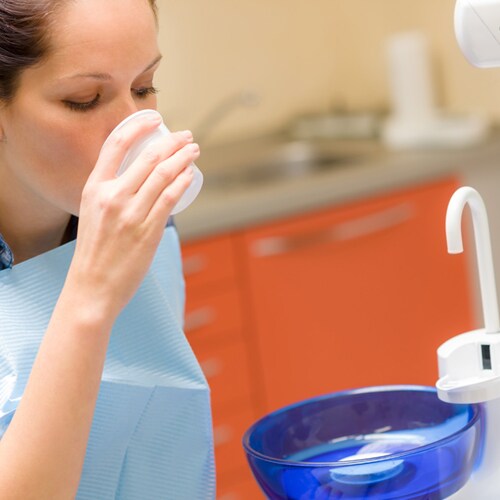In the midst of the COVID-19 pandemic, infection control is a higher priority than ever for dental students and professionals. SARS-CoV-2, the virus that causes COVID-19, is primarily spread by droplets, aerosols and physical contact, making the dental environment a particularly high-risk environment. As we all take steps to minimize the risk to patients, colleagues and ourselves, we discuss the role of pre-procedural mouth rinses.
Aerosols and the dental environment
Aerosol generation occurs during certain dental procedures, particularly those that involve the use of ultrasonic scalers, high-speed handpieces, or three-in-one syringes. These aerosols contain particles 50 microns (micrometers) and smaller in size, including microorganisms. Most of the particles are less than 5 microns and inhaled easily.
If a patient is infected with pathogenic microorganisms, these may be present in the aerosols generated during dental treatment. This means that team members and patients may have potential exposure to infection as a result of aerosol-generating procedures. Aerosols can remain in the air for up to several hours after generation.
How can pre-procedural mouthrinses help?
Pre-procedural rinsing is an off-label use for mouthrinses. The CDC guidance for dental settings states that pre-procedural rinsing may reduce microbial loads in dental aerosols.
The rinse used typically features one of the following ingredients:
- Chlorhexidine gluconate
- Cetylpyridinium chloride
- Hydrogen peroxide
- Povidone-iodine
- Essential oils.
A 2019 systematic review published in the Journal of the American Dental Association examined the use of pre-procedural mouth rinses containing chlorhexidine gluconate, cetylpyridinium chloride and essential oils. It was concluded that these pre-procedural rinses significantly reduced the amount of bacteria found in dental aerosols.
The CDC does point out that there is currently no published evidence to show that pre-rinsing reduces the oral viral load for SARS-CoV-2, or that pre-rinsing reduces transmission risk. However, we do know that the virus is vulnerable to oxidation.
Based on this fact, an International Journal of Oral Science article recommended using a pre-procedural mouth rinse such as 1% hydrogen peroxide or 0.2% povidone-iodine. This is echoed by the World Health Organization (WHO), whose interim guidance recommends a 20-second rinse with either 1% hydrogen peroxide or 0.2% povidone-iodine prior to beginning any examination or procedure.
Both hydrogen peroxide and povidone-iodine are oxidative agents, and while their efficacy against SARS-CoV-2 remains to be proven, it is indeed plausible.
As we continue to learn more about SARS-CoV-2, we will no doubt benefit from more conclusive evidence to support our infection control efforts. In the meantime, such pre-procedural mouthrinses offer us a simple, safe and affordable measure that is potentially beneficial.

